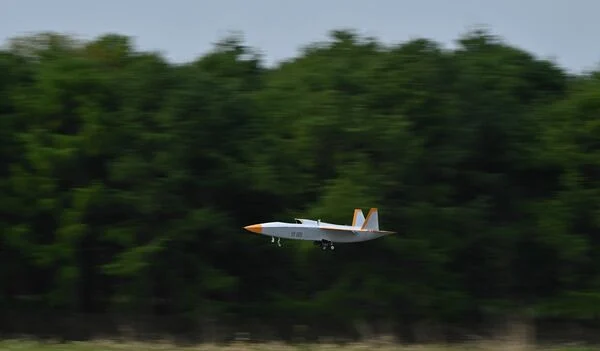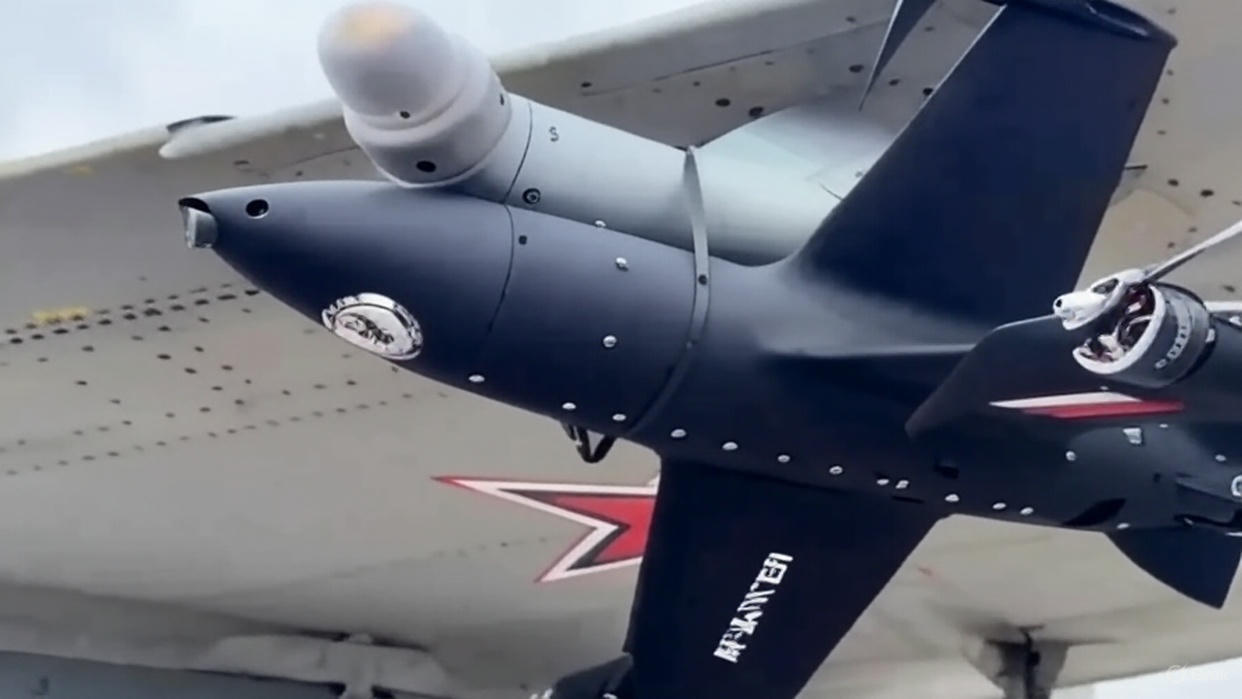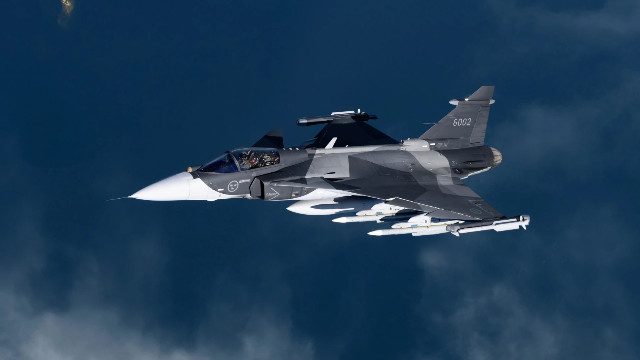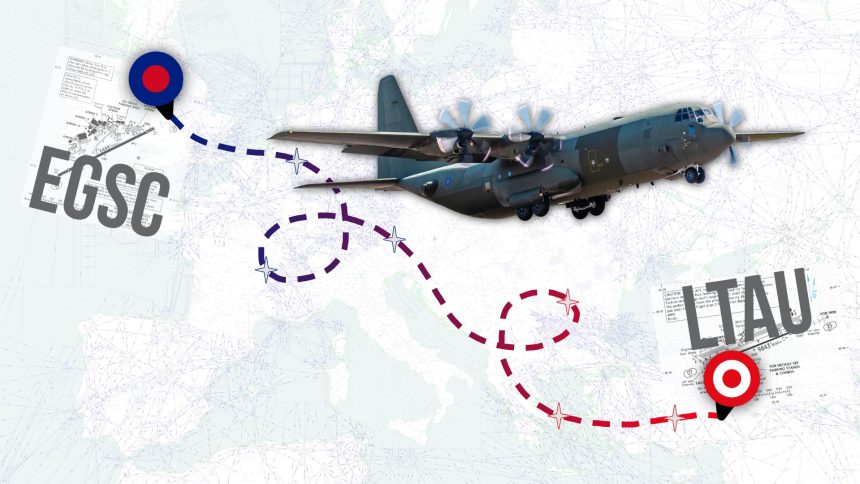At the 17th International Defence Industry Fair (IDEF 2025), held from July 22–27 at the Istanbul Expo Center, Subaru Corporation unveiled a groundbreaking milestone in Japan’s defense innovation: the delivery of eight experimental Loyal Wingman unmanned aerial vehicles (UAVs) to the Acquisition, Technology & Logistics Agency (ATLA) of Japan’s Ministry of Defense. This development marks a significant step forward in Japan’s ambitious plan to integrate advanced unmanned systems into its air combat strategy, enhancing the capabilities of its manned fighter fleet. Showcased prominently at Hall 4, Booth 4-A05, these cutting-edge UAVs signal Japan’s commitment to leading the global race in autonomous air combat technology, positioning the nation as a formidable player in next-generation warfare.
The Loyal Wingman Concept: A Paradigm Shift in Air Combat
The Loyal Wingman program represents a transformative approach to modern aerial warfare, where unmanned aircraft operate in tandem with manned fighter jets to enhance mission effectiveness. Unlike traditional UAVs, these collaborative combat aircraft (CCAs) are designed to autonomously support piloted aircraft, performing roles such as reconnaissance, electronic warfare, and direct attack missions. Subaru’s delivery of eight experimental Loyal Wingman UAVs to ATLA underscores Japan’s strategic focus on integrating manned-unmanned teaming (MUM-T) into its defense doctrine, aligning with global trends seen in programs like Boeing’s Airpower Teaming System and Korea Aerospace Industries’ UCAV initiatives.
The Loyal Wingman aircraft are engineered to operate alongside Japan’s next-generation Global Combat Air Programme (GCAP) fighters, a collaborative effort with the United Kingdom and Italy to develop sixth-generation combat aircraft. These UAVs are designed to provide combat mass, reduce risks to human pilots, and execute complex missions in contested environments. By leveraging advanced artificial intelligence (AI) and machine learning (ML), the Loyal Wingman platforms aim to autonomously adapt to dynamic battlefield conditions, making them a critical asset for future air superiority.
Subaru’s Contribution: Engineering Excellence Meets Innovation
Subaru Corporation, traditionally known for its automotive prowess, has emerged as a key player in Japan’s aerospace sector, particularly through its partnership with ATLA. The delivery of these eight experimental UAVs, announced on July 22, 2025, follows rigorous development and testing at Subaru’s aerospace facilities. At least two of these aircraft have already undergone flight trials, demonstrating their operational potential in real-world conditions. The trials focused on two primary technological advancements: an autonomous flight-route generation system and the ability to manage UAV operations from the cockpit of a manned aircraft.
The autonomous flight-route generation system enables the Loyal Wingman to calculate and select optimal flight paths in response to changing mission environments. This capability ensures the UAV can navigate complex scenarios, such as evading enemy radar or adapting to unexpected threats, without constant human intervention. The second focus—cockpit-based control—allows pilots in manned aircraft to oversee and direct UAV operations in real time, ensuring seamless coordination during high-stakes missions. These features position the Loyal Wingman as a force multiplier, enhancing the situational awareness and combat effectiveness of Japan’s air forces.
Subaru’s expertise in precision engineering has been instrumental in developing these UAVs. The company’s aerospace division, which has previously contributed to projects like the Boeing 787 Dreamliner and Japan’s F-2 fighter, brings a wealth of experience to the Loyal Wingman program. The UAVs are powered by advanced propulsion systems, potentially incorporating indigenous engines developed with support from Japan’s defense industry, ensuring reliability and performance in demanding conditions.
Technical Specifications and Capabilities
While specific technical details of the Loyal Wingman UAVs remain classified, insights from the defense community and posts on X suggest a highly capable platform. The UAVs are designed to be low-observable, incorporating radar-absorbing materials and stealth features to minimize detection by enemy sensors. This aligns with global trends in stealth technology, as seen in South Korea’s Low Observable Wingman UAV System (LOWUS), which emphasizes reduced radar cross-sections. The Subaru Loyal Wingman is likely equipped with an active electronically scanned array (AESA) radar, enabling advanced reconnaissance and targeting capabilities.
The aircraft are expected to support a range of mission profiles, including:
- Reconnaissance: Gathering real-time intelligence on enemy positions and movements.
- Electronic Warfare (EW): Jamming enemy communications and radar systems to disrupt operations.
- Attack Missions: Engaging aerial and ground targets with precision-guided munitions, such as those developed for Japan’s GCAP fighters.
The integration of AI and ML, developed in collaboration with the United States under the Overwhelming Response through Collaborative Autonomy project, enhances the UAVs’ ability to make autonomous decisions. This joint research, initiated in December 2023, focuses on enabling UAVs to coordinate seamlessly with manned aircraft, a critical requirement for future air combat scenarios. The AI systems are designed to analyze vast amounts of data in real time, allowing the Loyal Wingman to adapt to threats and execute complex maneuvers with minimal human input.
Strategic Context: Japan’s Defense Modernization
Japan’s pursuit of the Loyal Wingman program is driven by evolving regional security dynamics, particularly the growing military capabilities of China and North Korea. Recent incidents, such as a Chinese combat aircraft flying dangerously close to a Japanese maritime patrol aircraft, have underscored the need for enhanced air defense capabilities. The Loyal Wingman UAVs are part of Japan’s broader strategy to bolster its air forces, which includes the development of the GCAP fighter and investments in AI-driven technologies.
The delivery of these UAVs to ATLA coincides with Japan’s increased defense spending, with ¥10.1 billion (approximately USD70.9 million) allocated in 2022 for combat support UAV research. This investment reflects Japan’s commitment to maintaining a technological edge in the Indo-Pacific region, where unmanned systems are becoming increasingly critical to countering threats like hypersonic missiles and drone swarms. The Loyal Wingman program also strengthens Japan’s defense partnerships, particularly with the United States, as evidenced by the joint AI research agreement.
IDEF 2025: A Global Stage for Innovation
The unveiling of the Loyal Wingman UAVs at IDEF 2025 provided Subaru with a global platform to showcase its aerospace capabilities. The event, attended by defense industry leaders, military officials, and international delegations, highlighted Japan’s growing influence in the global arms market. Subaru’s booth at Hall 4, Booth 4-A05, featured interactive displays and simulations of the Loyal Wingman’s capabilities, drawing significant interest from NATO allies and regional partners. Posts on X praised the UAVs’ sleek design and advanced AI integration, with defense enthusiasts noting their potential to reshape air combat tactics.
The Loyal Wingman’s debut at IDEF 2025 also highlighted Japan’s collaboration with international partners. The UAVs are designed to be compatible with NATO communication and logistics standards, facilitating interoperability with allied forces. This aligns with Japan’s role in the GCAP, which aims to deliver a sixth-generation fighter capable of integrating with advanced unmanned systems. The program’s success could pave the way for export opportunities, positioning Subaru as a competitor to global players like Boeing and BAE Systems.
Comparison with Global Loyal Wingman Programs
Japan’s Loyal Wingman initiative is part of a global race to develop collaborative combat aircraft. Several nations are pursuing similar programs, each with unique approaches:
- Australia’s Airpower Teaming System (ATS): Boeing Australia’s Loyal Wingman, unveiled in 2021, is a low-cost, attritable UAV designed to support the Royal Australian Air Force’s manned fighters. It emphasizes affordability and rapid production, contrasting with Japan’s focus on AI-driven autonomy.
- South Korea’s LOWUS: Unveiled in February 2025, South Korea’s stealth Loyal Wingman, developed by Korean Air and the Agency for Defense Development, prioritizes low-observable technology and multi-role capabilities, similar to Japan’s approach.
- India’s CATS Warrior: Hindustan Aeronautics Limited’s twin-engine UCAV, tested in January 2025, is designed to operate alongside manned fighters and attack ground targets, with flight trials planned for 2024.
- UK’s Autonomous Collaborative Platform (ACP): BAE Systems’ concept, revealed in 2024, focuses on multi-mission capabilities for the GCAP, aligning closely with Japan’s objectives.
Subaru’s Loyal Wingman stands out for its emphasis on AI-driven autonomy and cockpit-based control, offering a unique blend of advanced technology and operational flexibility. Its integration with the GCAP positions it as a critical component of Japan’s future air combat ecosystem.
Challenges and Future Prospects
Despite its promise, the Loyal Wingman program faces several challenges. Developing reliable AI systems for autonomous operations requires significant investment and testing to ensure robustness in contested environments. The integration of UAVs with manned aircraft also poses logistical and technical hurdles, particularly in coordinating real-time operations across multiple platforms. Additionally, the high cost of advanced sensors and stealth technology could limit the program’s scalability, a concern echoed in South Korea’s UCAV program.
However, Subaru’s progress suggests a bright future. The successful delivery of eight experimental UAVs and ongoing flight trials indicate that the program is on track to meet its objectives. ATLA’s evaluation program, set to continue through 2025, will provide critical data on the UAVs’ performance, paving the way for full-scale production. The collaboration with the United States on AI development further enhances the program’s potential, with the possibility of integrating technologies like loitering munitions and advanced electronic warfare systems.
Looking ahead, the Loyal Wingman could play a pivotal role in Japan’s defense strategy, particularly in countering regional threats and supporting allied operations. Its potential export to NATO allies and Indo-Pacific partners could also bolster Japan’s defense industry, which is increasingly focused on global markets. The program’s success at IDEF 2025 has already generated significant interest, with defense analysts predicting that the Loyal Wingman could become a cornerstone of Japan’s air defense capabilities by the end of the decade.
Conclusion
Subaru’s delivery of eight experimental Loyal Wingman UAVs to ATLA marks a defining moment in Japan’s defense modernization efforts. Showcased at IDEF 2025, these advanced unmanned systems demonstrate Japan’s commitment to integrating AI-driven autonomy and manned-unmanned teaming into its air combat strategy. With their low-observable design, advanced sensors, and multi-role capabilities, the Loyal Wingman UAVs are poised to redefine aerial warfare, enhancing the effectiveness of Japan’s manned fighter fleet and strengthening its position in the global defense landscape. As Subaru continues to refine these platforms and expand its international partnerships, the Loyal Wingman program stands as a testament to Japan’s technological ambition and strategic foresight.




